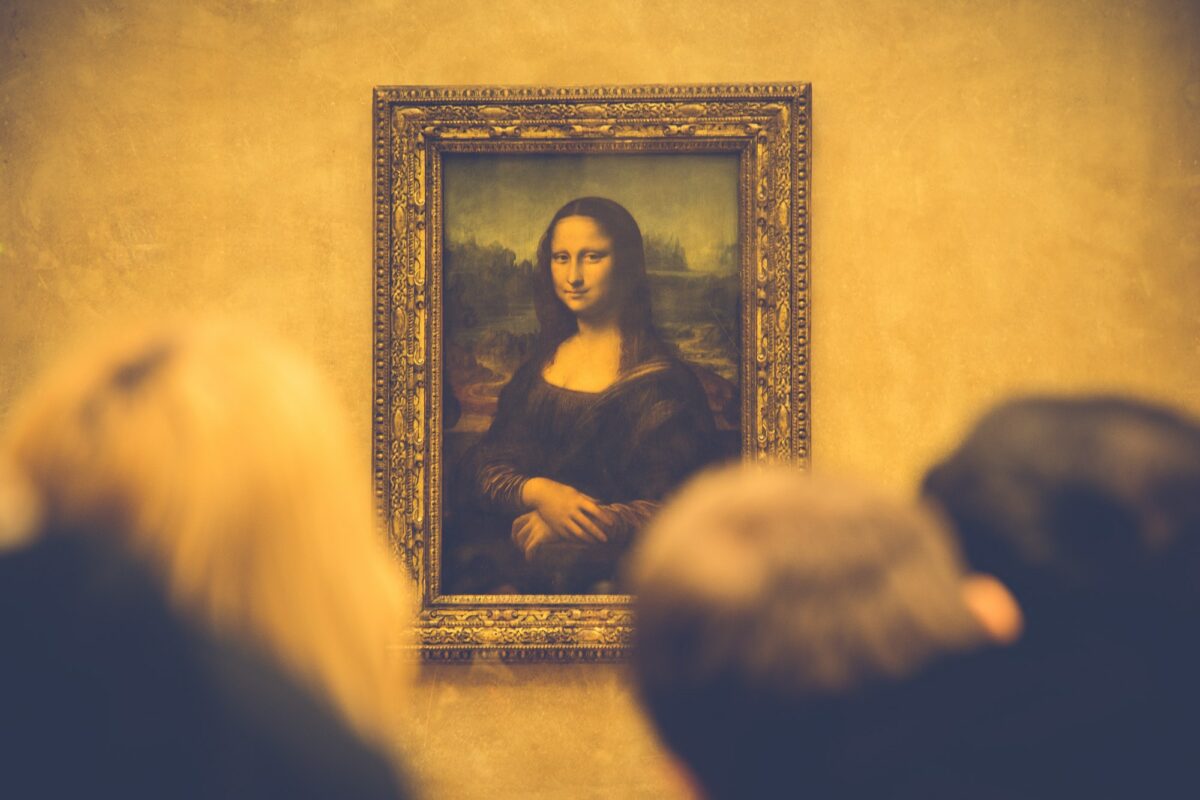
Nuclear Mona Lisa !
You all know that nuclear power is not only used to produce energy.
From its discovery many applications have been developed.
You surely can think about medical with radioisotopes therapy, sterilisation of medical products and supplies, or consumer products such as smoke detectors, industrial tracers…
It is also used a lot for the restoration and conservation of works of art. Paintings, clothing and musical instruments, statues, weapons, armour, mummies or even ancient wooden ship… All these can benefit from the mighty atom’s properties without causing any damage to the object being studied.
XRF (X-Ray Fluorescence), is here a very powerful tool: you can study the distribution of the individual pigments in a painting and determine authorship (which helps to detect forgeries).
The XRF technique can detect the existence of harmful elements that are degrading the painting. It can reveal the existence of hidden paintings by measuring the concentration of chemical elements on the surface, both on the painting that is in view and the one hidden underneath. XRF is a bit like the super hero of nuclear technique…
Here a great example from 2010:
Scientists in France used the XRF method to study the Mona Lisa, a 16th-century masterpiece by the Italian artist Leonardo da Vinci. The researchers analysed the composition and thickness of the different layers of paint and glaze and were able to better understand da Vinci’s ‘sfumato’ technique, the fine shading that creates soft transitions between colours and makes the work of art look so lifelike. And while you’re here, know that sfumato comes from the Italian sfumare, “to tone down” or “to evaporate like smoke”. Now go on, feel free to impress your work colleagues with that…
But XRF is not the only nuclear related techniques helping to conserve our cultural heritage, there is actually a whole team of super techniques here:
1. Chemical composition: X-rays fluorescence (XRF), X-ray diffraction (XRD), neutron activation analysis (NAA) and a variety of ion beam methods, such as proton-induced X-ray emission (PIXE), proton-induced gamma-ray emission (PIGE) or accelerator mass spectrometry (AMS).
2. Dating: To find out the age of organic materials, nothing beats radiocarbon dating.
3. Structure of materials: To analyse the internal structure and integrity of cultural heritage objects, scientists use industrial radiography: X-rays, gamma rays or neutrons. Simple!
4. Disinfection: another important technique for art conservation uses irradiation to help conserve cultural objects by disinfecting them from microorganisms like bacteria or fungi or by eradicating destructive pests. 5. Consolidation: Irradiation can be used to re-establish the chemical bonds of deteriorated objects, thereby helping to strengthen and solidify artefacts. The appearance of the object remains virtually unchanged, but the material and its physical and chemical properties are transformed in such a way that they become stronger and denser.
Now that’s what you call a top team with special powers.
Stay at the forefront of innovation, subscribe: https://www.intechbrew.com/
Sources: https://www.esrf.fr/news/general-old/general-2010/new-light-on-leonardo-da-vinci2019s-faces; https://www.foronuclear.org/en/nuclear-power/questions-and-answers/on-applications-or-nuclear-technology/how-can-we-apply-nuclear-technology-to-art-restoration/ ; https://www.iaea.org/newscenter/news/studying-and-preserving-cultural-heritage-using-nuclear-science-and-technology



